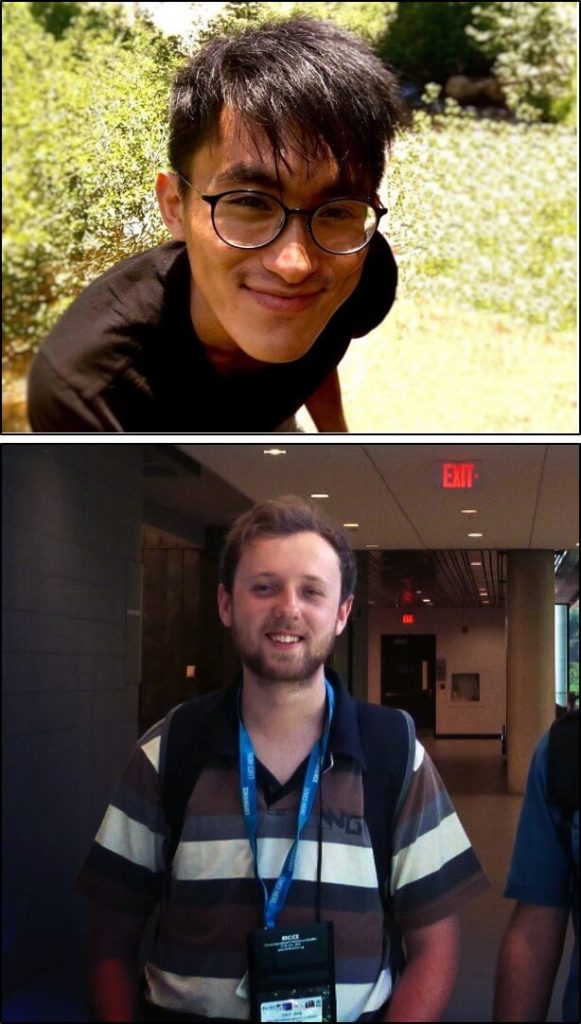
The scientists featured in biology textbooks and courses tend to be males of European decent, but in reality, scientists are much more diverse, representing different ethnicities, sexes, genders, abilities, sexual orientations, and backgrounds.
In BIOL 336, students get the chance to explore this diversity by engaging in a tutorial activity where they select an evolutionary biologist from an underrepresented group and write a short biography about the researcher and their work.
As BIOL 336 TAs last term, Takuji Usui and Gabriel Dall’Alba facilitated this activity with students in their tutorial sessions. Below, they explain why and how the activity was included in the course, describe the impact on students, and share what they learned along the way.
What was the motivation behind using this activity?
Overall, we were trying to highlight and promote the work of researchers from underrepresented groups in Evolutionary Biology. Our field is still far from representative in terms of the diversity of our researchers, and even in the materials that we teach from. This activity is one way in which we can try and engage with this issue with students in the classroom. We hope students were able to see that there is a growing diversity of researchers in Evolutionary Biology doing amazing work, and that whilst still underrepresented, the field is slowly changing to become more inclusive and supportive of a diverse membership.
This is important because academia should be welcoming and accessible to everyone interested in pursuing a career in science or any other field. When we have so many brilliant minds interested in that around the world, it becomes part of our duty to make sure that they will be able to join this community and pursue the career paths they dream of. Science itself, for instance, largely benefits from this increase in diversity: different walks of life, different experiences, different ways of approaching problems all enrich scientific research. We cannot afford to lose those minds by giving them the impression that they will be outsiders or unwelcome when looking at their local academia environment.
How was this activity implemented in the course?
This activity was part of a broader tutorial on “Human Diversity”, which explored a wide-range of topics from race, the biology of human diversity, and the diversity of evolutionary biologists. In this particular activity, we gave students an opportunity to write both a short biography on an evolutionary biologist from an underrepresented group, and a summary of a scientific paper that had been written by this researcher. We also gave the students some online resources the Diversify EEB website that highlights researchers from underrepresented groups in Ecology and Evolutionary Biology, as well as specific social media accounts (on Twitter and Instagram, for instance) with the same purpose. They were also encouraged to talk with us or their colleagues and friends in order to find an evolutionary biologist of interest.
In the same tutorial we also dealt with issues of racism and eugenics in Evolutionary Biology and students were asked to read the Norton et al. (2019) article Human races are not like dog breeds: refuting a racist analogy. Evolutionary Biology both historically and currently still has a fraught relationship with these issues, and it is important that the students be made aware of these problems.
What was the result?
Students produced beautifully and articulately written reports on both the scientists and their research. They came out more aware of the diversity around them and were able to see that although it might not be perfect yet, we are moving in the right direction.
Students also expressed that they were thankful for the time and space to think about and discuss issues of diversity in Evolutionary Biology, and they highlighted how important it is to have these discussions (especially within academia).
What did you learn or find surprising?
We learned so much about the exciting research being done by amazing researchers all over the world. We encouraged students to interpret for themselves what “diversity” means, and it was fascinating to see how they explored this, based on how they think representation in the field may be changing or how it could change. It reflected well what diversity is all about: the multitude of backgrounds, walks of life, life stories, etc.
What advice would you give someone who might want to do something similar in their course?
Knowing that this topic can be sensitive, we spent a lot of time thinking about how to respectfully approach the topic and how to make the classroom an environment that was truly welcoming to this discussion. Emphasizing to students that the classroom is a place where they can voice their thoughts and be at ease that they will be taken seriously and in a charitable way (i.e., always applying the principle of charity to what others will say) made the difference!
We also found that it was important to emphasize the “why” of what we were doing. It was key to talk about why this activity is important, what problems exist in the field today, and what we can do to bring about change. It was also critical to be open about what we meant by “diversity”, since it means different things to different people.
Finally, it was important to consider how our own privilege and worldviews might intersect with these issues. We were all encouraged to think about how we participate in either promoting those issues or helping fixing them, and we all learned valuable lessons about this too.